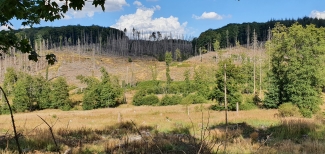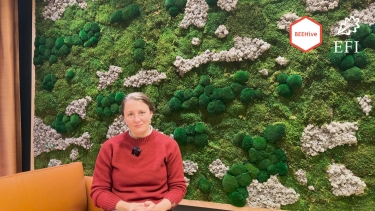What actions would be needed to restore European forest ecosystems?

In early 2024, the European Parliament will have a final vote on the ‘Nature Restoration Law’ (NRL), a hotly debated regulation that aims to halt and reverse biodiversity loss in Europe. An international team of scientists, led by Daniel Herring (University Duisburg-Essen), with contributions from European Forest Institute and Wageningen University and Research in the framework of the SUPERB project has investigated the prospects of the new regulation: how effective is this law going to be and what needs to happen? The article Securing success for the Nature Restoration Law was published on 15 December in the scientific journal Science. Even though the law has been weakened in the negotiation process, the restoration measures are already starting.
The ‘Nature Restoration Law’ (NRL) requires member states of the EU to implement restoration measures on at least 20 per cent of land and marine areas by 2030, and in all ecosystems in need of restoration by 2050. The NRL already took various hurdles: most recently, it was approved by the EU Parliament’s Environment Committee, after delegations of the Parliament and the Council of Europe agreed the final text.
But will the regulation really achieve its aims? The authors, including scientists that lead large European projects on nature restoration and biodiversity, analysed experiences with other European environmental directives and policies, and evaluated the prospects of the NRL to be successful.
"The NRL has successfully overcome numerous challenges that typically impede the implementation of European policies and regulations. Regardless of the parliamentary decisions expected in January, urgent restoration efforts are already underway in many locations." says Gert-Jan Nabuurs, Professor at Wageningen University and Research (WUR), and co-coordinator of SUPERB. “The regulation saves time as it does not need to be transposed into national law, and an implementation framework and goals are clearly laid out.” At the same time, national implementation will be crucial for the NRL’s success. “The scientific community is actively generating extensive knowledge on landscape-level nature restoration, approaching it through different lenses, including governance, community engagement, species selection for the future, and ensuring sustainable financing for restoration”, emphasizes Magda Bou Dagher Kharrat, SUPERB coordinator and Principal Scientist at European Forest Institute. “This will help European countries in preparing their national restoration plans.
"Key for the implementation will be the cooperation of nature restoration with landowners and land users, in particular with managers and practitioners who directly work in the field", says Silke Jacobs (WUR) who is part of SUPERB as well. “These managers and practitioners are crucial for long term maintenance of the forest. Only then forests will perform better for biodiversity, CO2 sequestration and wood provision in the long term”. Restoration takes time.
SUPERB is an excellent example of the European restoration initiatives aiming at large scale forest restoration, with several European countries implementing restoration measures. Given the variety of stressors which weakened the state of European forests over the past decades; ranging from wildfires, windstorms, bark beetle calamities to fragmentation and intensive plantations; the selection of appropriate restoration actions is crucial to succeed. However, essential part of the project is also the upscaling of the restoration actions. "Engagement and willingness of national and regional institutions, as well as involvement of private funding sector will allow to support and contribute to not only the nature restoration but it would also fulfil the goals of National Forest Strategies", says Sara Filipek from WUR, working also on SUPERB project.
Overall, the authors of the article provide a positive outlook for the NRL, but warn that ambitious national implementation and cooperation will eventually determine the success of nature restoration in Europe.
The NRL is part of the Green Deal and is, amongst others, intended to fulfil the international biodiversity agreement of Kunming-Montreal, according to which at least 30 percent of degraded ecosystems must be restored.
Further information:
Daniel Hering et al, Securing success for the Nature Restoration Laws. Science 382, 1248-1250 (2023). DOI: 10.1126/science.adk1658


